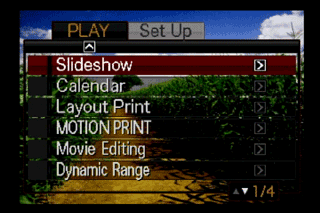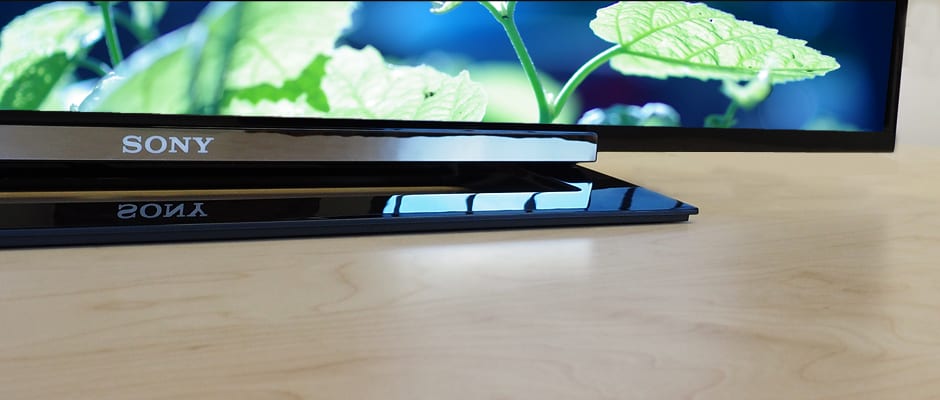Pros
Cons
Overview
These entry-level displays come in 40- and 50-inch sizes and offer nothing in the way of smart features. Though the R450A impressed us greatly with some absolutely gleaming color performance, we were ultimately jilted by blurry, jumpy motion, poor contrast, and a narrow viewing angle. For this price range, shoppers can buy better.
The Outfit
A silver accent livens this dark ensemble.
Unlike most entry-level televisions, the R450A accessorizes with a zippy silver accent along its front. Everything else is business as usual, with skinny bezels up top and a hollowed rectangular stand below.
For a medium-sized display, it's a bit disappointing to see just two HDMI ports, but at least users get a headphone jack, digital optical audio out, one USB port, shared composite/component hookups, and an antenna connection.
Users can control the TV with a small, basic remote, but this is no fun in a dark room because nothing lights up. In case of a missing remote, there is also a very abbreviated control set on the back of the television's right side.
{{photo_gallery "looks"}}
The Extras
No singing and dancing here
Though the feature set on this TV is limited to media playback via USB, the control set is actually nicer than usual. For one, the menu interface is just cleaner and more attractive than what you often find on entry-level models. As to the guts, Sony includes basic controls for Backlight, Picture (contrast), Color, Hue, and Sharpness, and there is even a Gamma option on hand—which impacts the manner in which a display allocates luminance from dark to light.
Other features include CineMotion and LED Motion Mode. The former has practically no visual effect, and the latter, which triggers backlight scanning, is much the same. As such, neither of these settings are anything to get excited about.
{{photo_gallery "menu"}}
Rounding out the features are a great surround mode and a full-sized EQ. The Hobbit sounded great on this TV, and the ability to tweak sound to an even finer degree by way of the EQ is a very welcome addition.
The Picture Quality
Not meant for dark environments
While this TV may suffice for lovers of daytime TV, the KDL-40R450A is not equipped to handle theater-like settings, due to poor dark levels. Areas of shadow that ought to appear stark and cavernous instead look almost grey—and a dark room makes it all the more noticeable. The television is plenty bright for light, daytime settings though, so if you just need your Soaps everyday at three o'clock, this TV might work for you.
Then again, when the camera pans in slow motion over a vixen's tearstained face (she just discovered that her sister bedded her lover, Magner McSteel), you may notice blurry, jumpy motion performance. This flaw won't manifest during regular viewing like talk shows or news broadcasts, but as I watched The Hobbit on Blu-ray, the problem was downright distracting.
Color impressed us, at least. The R450A produces very accurate colors that adhere quite closely to the international standard for HDTV color. Unfortunately, the poor dark level really puts a damper on the overall performance—and a very narrow viewing angle makes things that much worse.
Final Look
Not an optimal centerpiece for a home theater
Though the Sony KDL-40R450A knocked our socks off with its color performance, its shallow black level spelled its ultimate demise as a wholly average TV. The 60Hz refresh rate doesn't help things either; cinematic panning has a fuzzy, jittery character that degrades film quality noticeably.
If you just need a TV for a bright room, one to watch talk shows and news broadcasts on, the entry-level R450A (MSRP $599) will do, but just barely. If you want better performance for watching films in low-light settings, you should definitely keep browsing.
Behind the Screens
Sony's KDL-40R450A nailed its color tests during its time in the lab, yet it fell short of greatness in the end. This panel certainly ramps up bright enough for any setting, but its minimum luminance disqualifies it from theater-like settings.
To make matters worse, this TV also falls into the common LCD trap of poor performance with regards to viewing angle, which turned out to be very narrow.
Color
And the color trophy goes to...
Color integrity relies on three important performance aspects: adherence to the Rec. 709 HDTV international standard, even even color temperature, and smooth, balanced color curves.
I'll start with the first item, adherence to the Rec. 709 standard. The R450A almost aced this test, matching the standard from point to point very closely. The TV faltered on its blue point, oversaturating the color just a little, but blue is the least perceptible to our human eyes—so this is a forgivable error. Red, green, and white are all pretty much spot on, making for one great-looking color gamut.

The R450A handled color temperature admirably as well. The only errors that popped up during testing plagued the darkest portion of the greyscale, which is again the least perceptible portion. Viewers will likely never see these blueish temperature errors.

Finishing strong, the R450A handled all 256 steps of red, blue, green, and greyscale fairly well. The transitions from hue to hue are mostly smooth, though blue ramps ahead of the rest. Therefore, images should appear fairly polished, without too much trouble from color banding.

Contrast
Caves will look something short of cavernous on this panel.
To determine the contrast ratio of a display, we simply divide its peak brightness by its lowest luminance level. This is the single most important area of performance, and the R450A flunked.

Though I measured a perfectly acceptable peak brightness of 203 cd/m2 , the low measurement was a huge let down: 0.22 cd/m2 is more like dark grey than true black, and it certainly won't render areas of shadow with impressive detail. These two readings make for a below-average contrast ratio of 922:1.
Viewing Angle
Short end of the couch
Since the R450 series ships in 50-inch varieties, the fact that its viewing angle is narrow is a real drawback. Many people wall mount large TVs, or watch with big groups, and the person on the end of a couch in front of this TV will have a degraded experience.

This issue is common with LCDs, unfortunately, so the total viewing angle of 53º did not come as a surprise. We've certainly seen worse, but this performance is nowhere near what plasmas can deliver.
Meet the tester
Virginia is a former Managing Editor at Reviewed.com. She has a background in English and journalism. Away from the office, Virginia passes time with dusty books & house cats.
Checking our work.
Our team is here to help you buy the best stuff and love what you own. Our writers, editors, and experts obsess over the products we cover to make sure you're confident and satisfied. Have a different opinion about something we recommend? Email us and we'll compare notes.
Shoot us an email

